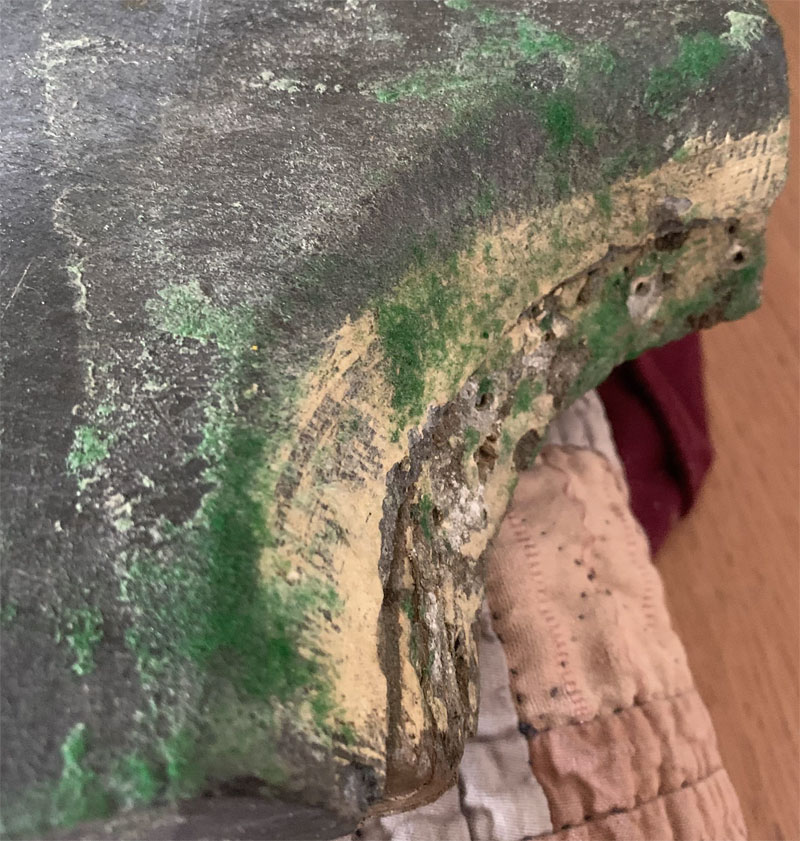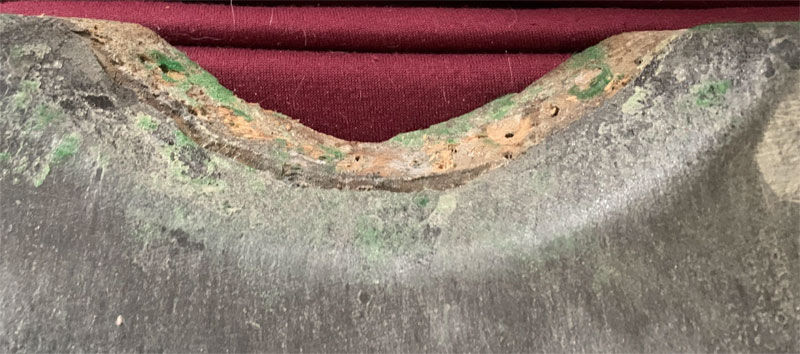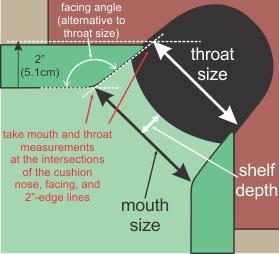"Roll-In" vs. "Drop-In" Pockets on a Pool Table
12/30/2021 10:25:04 AM
"Roll-In" vs. "Drop-In" Pockets on a Pool Table
I am curious about the last comment on a previous question ID Jungblut or Strahle Antique Pool Table?.
In one answer, the user mentions:
Does anyone know when Brunswick Balke Collender Co. changed from role-in to drop-in pockets? When the table was cut down by Brunswick, they incorporated #4 irons and roll-in pockets.
Specifically, I'm interested in the part that mentions “roll in” vs “drop in” pockets.
I was searching the web and this is the only place where I see a comment about that.
I just picked up a Brunswick pool table that I’m trying to identify, and was really curious about the slate angles at the pockets.
They seems to protrude more in the pool table thus making the shot “easier”.
Has anyone played on a "roll-in" type pool table, and if so, is there any difference?
To repeat Heydrkeith’s question:
[Does anyone have] any idea when the switch to drop-in pockets was made?
"Roll-In" vs. "Drop-In" Pockets on a Pool Table
Replies & Comments
 RayMills on 12/31/2021 5:42:16 PM
RayMills on 12/31/2021 5:42:16 PMI don't understand the question/discussion:
Is this an examination of the angle a slowly-pocketed ball would take as it leaves the playing surface? Can't we assume that any slow-moving ball would begin falling at the same point in a slate's cut-out regardless of the slope encountered afterward?
Did Brunswick want to make the balls begin a free-fall slightly sooner, or perhaps steer them to the rear of the pockets?
user1640888703 on 1/2/2022 10:05:59 AM
Thank you for clarifying the question.
In short, is the circumference of the pocket wider because it is a slow slope? On the side pockets especially, it seems to be bigger, making the ball start its descent sooner (I am french speaking so all this terminology is difficult for me).
Also, I didn’t know if I should started another thread (I’m also new to any forum), but I also would like to identify my pool table.
Here are some photos of the side and corner pockets.
Thank you for your time!
Corner Pocket:
Side Pocket:
 RayMills on 1/2/2022 8:30:33 PM
RayMills on 1/2/2022 8:30:33 PMThese photos have me confused, but when I went back to the original thread, the "Rococo" pool table photo had a corner pocket which seemed to have a "square" hole!
This makes me think that Brunswick or Strahle or whomever might never have made such a conversion, but that we are viewing the results of an aftermarket tradesman who had trouble cutting new semi-circles into such hard slate.
I see the sloped wood "shelf" in that same pocket, and this might be the results of trying to use a too-big frame on a "Frankenstein" 4x8 pool table creation.
Do you have a pool table which seems to be originally manufactured with slopes?
I'll leave such a characteristic to our resident historian.
 billiardsforum on 1/11/2022 2:09:46 AM
billiardsforum on 1/11/2022 2:09:46 AMYour pool table is absolutely STUNNING!
I've split the identification question into it's own question: Identify Model and Age of an Antique Brunswick Pool Table. There's a good chance I can ID it once I have time to dig through the archives.
Also, here's a quick diagram that discusses some of the terminology for the areas around a pool table pocket. It might help in your search for more answers and in any further communication you might have with others on the subject.
The main area of the slate in question is called the "shelf". You have a sloped shelf, instead of a flat shelf that has a 90 degree edge and a vertical wall down to the pocket.
In the meanwhile, I've asked around about the beveled pockets like the ones on the pool table you acquired. The overwhelming answer was that this was done to some pool tables to make them play easier for beginners.
Here are some of the relevant comments I received:
I've always heard that the bevel you describe was to make the table play easier. They came like that, especially on home pool tables. I've seen lots of home tables with a pretty big bevel. I think even Brunswick even did it a little on the Gold Crown (their main commercial pool table), depending on if it was purchased with real slate or "Brunstone".
...and:
About 50 years ago I was coming off a drilling rig out in the middle of nowhere Texas. I went into the local town and found a Mexican pool hall on Main Street. I got a set of balls and went to a pool table in the middle of the room and started practicing. Just a few minutes later one of the locals came over and told me I was playing on the 'ladies' table. He then showed me the beveled slate and explained it was to make things easier for beginners.
That was the first pool table I had seen with the sloped slate. Later in my travels, one of the explanations I heard for why this was done was that it made each games go more quickly in the places that charged for table time "by the rack".
Bob Jewett, a well-known contributor to Billiard Digest, owner of Bob's Billiard Books, and co-owner of the San Francisco Billiard Academy, also heard that it was done to reduce the time it took to complete each rack. This allowed proprietors to earn more income per pool table in a given amount of time.
Another contact of mine referred to them as "drop-off pockets":
A little room in my home town a Brunswick "Anniversary Centennial", and two Brunswick Anniversary pool tables . The third one had those drop off pockets. I saw it happen many times—a ball hit ever so slowly down the rail by the side could and would drop right into the pocket.
So the consensus is that this was done to make certain pool tables "play easier". Most thought your specific slate was likely ground down by someone.
The official World Pool-Billiard Association official pool table specs refer to the slate's pocket cuts as "vertical". Pool tables with a beveled shelf like yours wouldn't meet those specs (though a very slight bevel is acceptible). Strangely, they don't specify the maximum acceptible bevel radius.
Shelf: The shelf is measured from the center of the imaginary line that goes from one side of the mouth to the other – where the nose of the cushion changes direction – to the vertical cut of the slate pocket cut. Shelf includes bevel.
Source: wpapool.com/equipment-specifications/#Slates
My thoughts are that you could probably repair that quite easily. If it were mine, I would probably make a rough mold out of a flexible material (e.g. tape a piece of sheet metal or aluminum vertically on the pocket opening), and fill it in with a product like Bondo (get it on Amazon.com). Once hard, I'd use an angle grinder to make it perfectly smooth.
There's one more contact I can pass along if you would like another opinion. Call Ken Hash at Classic Billiards in Fallston, MD at (410) 256-8388.
He's the guy to talk to for this type of stuff. He is generally always happy to help and willing to give free advice where he can etc.
user1640888703 on 1/12/2022 4:52:08 AM
Wow that is great!
I’m having some mixed emotions about owning a "ladies table" after purchasing a snooker-style table because I wanted a little more challenge. LOL. But I definitely can live with a pool table having such history.
"Fixing" the shelf with Bondo will definitely be considered. I can probably copy the shelf depth measurement off of a modern snooker table.
I am in love with this pool table and I'm literally renovating the whole place around this table.
Once the flooring is all done I will assemble the pool table and post more photos.
Thank you for your time and for the rich information!
"Roll-In" vs. "Drop-In" Pockets on a Pool Table
- Title: "Roll-In" vs. "Drop-In" Pockets on a Pool Table
- Author: user1640888703
- Published: 12/30/2021 10:25:04 AM
- Last Updated: 12/31/2021 10:08:07 AM
- Last Updated By: billiardsforum (Billiards Forum)



